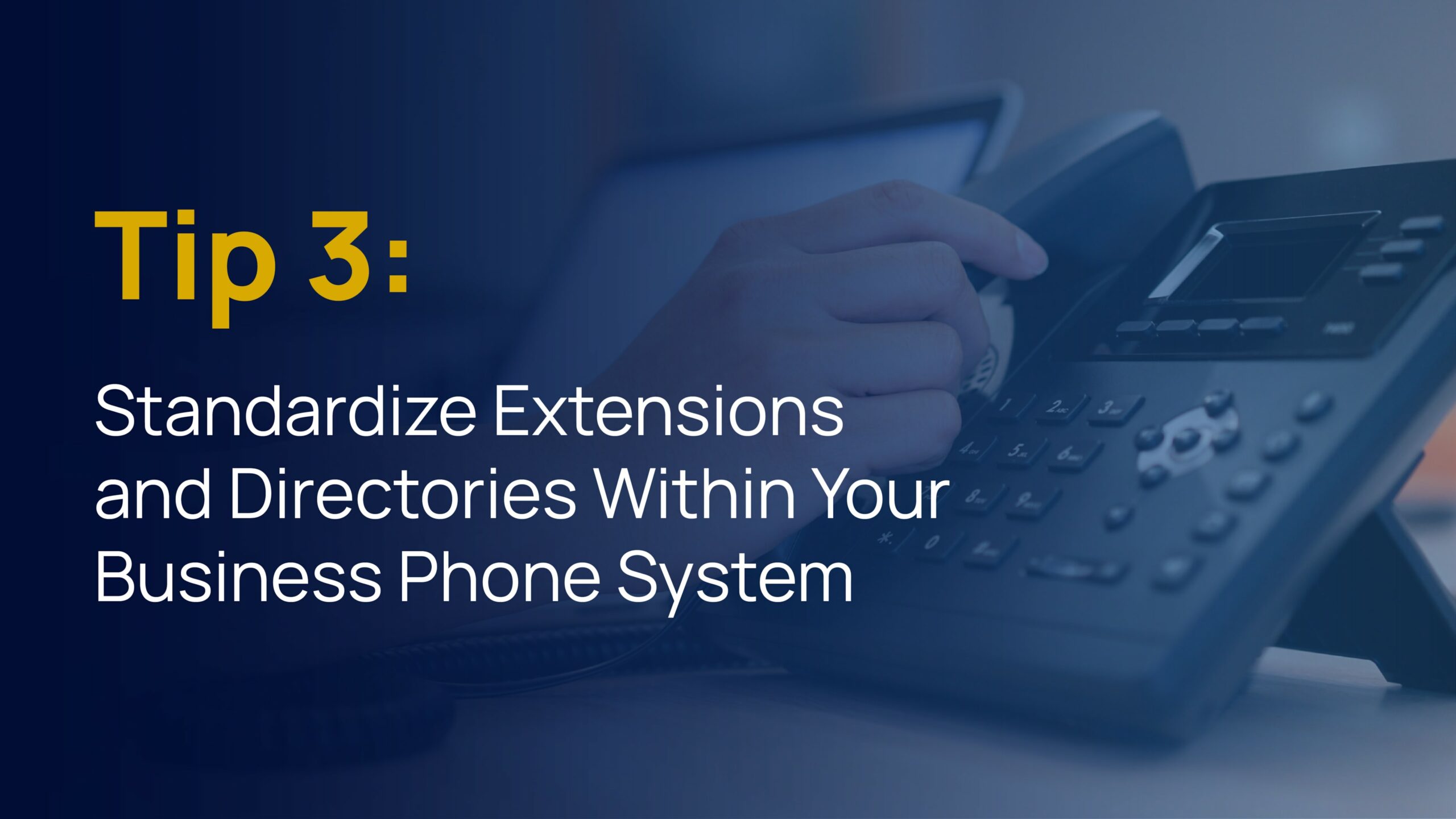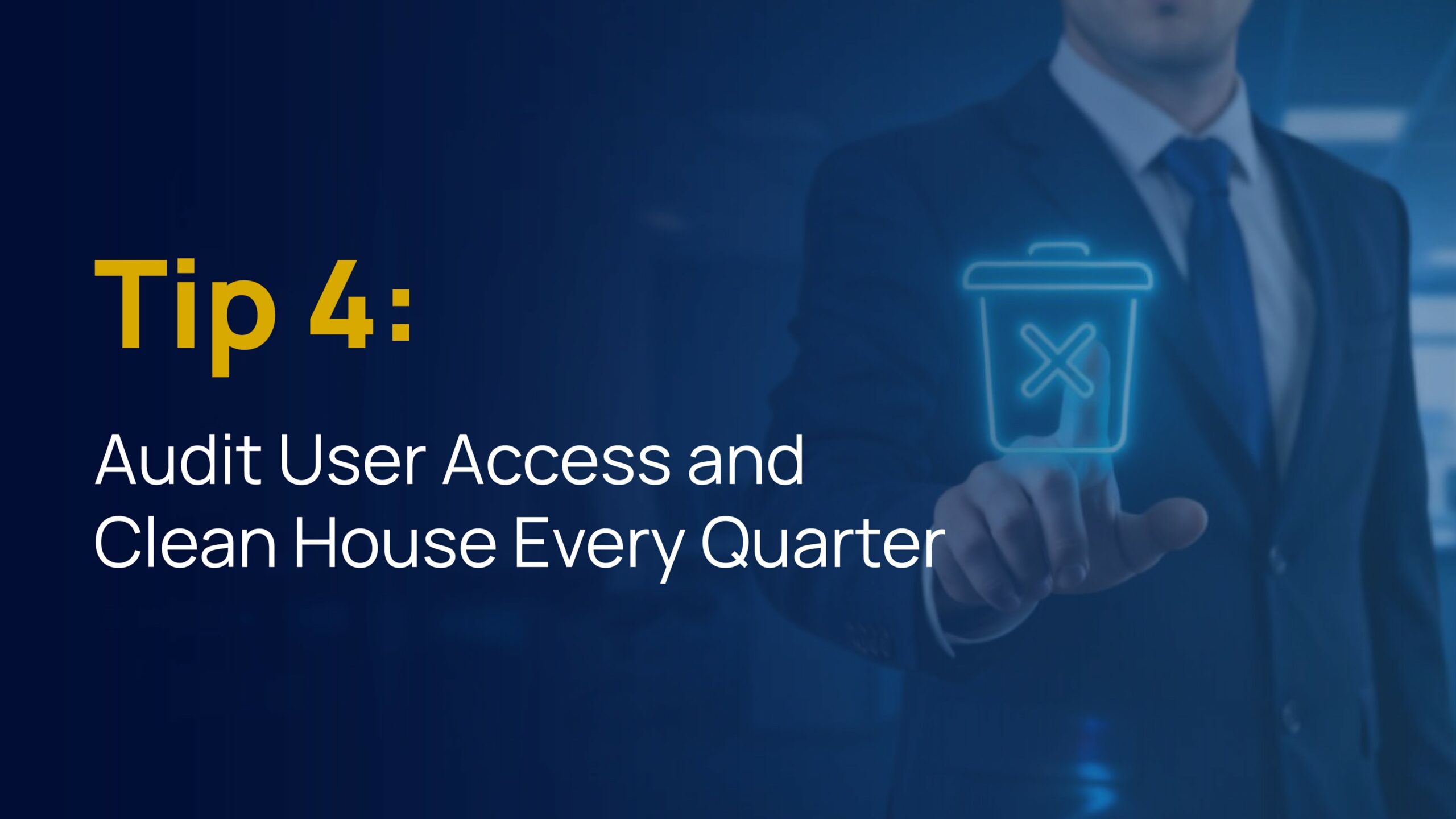
If there’s a rulebook for running a business here, the first page would say, “Expect chaos.”
Between the staffing curveballs, the calls that come in at the worst time, and the ever-growing pile of technology tools, it’s easy to let your phone system run on autopilot.
Here’s the thing, though. . .when your phones aren’t pulling their weight, your whole operation feels it.
Luckily, you don’t need a full rip-and-replace to get more collaboration out of your setup. A few small moves can make a big difference. These five simple tweaks can optimize your business phone system so it works better, faster, and harder for your team.
Tip 1: Evaluate Your Call Flow Like a Customer

Nobody wants to sit through a 5-option phone menu only to land in the wrong place. If your call flow has more layers than Nona’s lasagna, it’s probably frustrating your clients and slowing down your employees.
Look at your business phone system setup from the outside in. Pretend you’re a customer trying to reach someone specific. How long does it take? Where does the call go if no one picks up? Is it clear who to press for what, or are people just guessing?
Some ways to tighten it up:
- Keep the menu short and simple
- Route calls directly when possible, not through layers of transfers
- Set up after-hours rules so calls don’t go into the void
- Add backup routing so someone always gets the call
Even if your team’s great at picking up the slack, a cleaner call flow improves efficiency and gives your callers a more reliable connection.
Tip 2: Integrate Your Phone System with Business Apps

If your business phone system isn’t talking to your other tools, you’re working harder than you need to. Most New England VoIP providers now support integrations with CRMs, ticketing platforms, scheduling tools, and other business communication tools.
Taking advantage of these integrations can help maximize your resources while boosting productivity. Here are just a few examples:
- Your sales team can click-to-call right from the CRM
- Support has visibility of a full history the second the phone rings
- Admins don’t have to track calls with spreadsheets thanks to automatic logging
Not sure which integrations will deliver the biggest benefit?
Start by mapping your most-used apps and asking: What would be easier if my phone system shared data with this tool? Then, work with your provider to enable those integrations and train your staff on how to use them.
The Rhode Island Telephone Team built Cloudworx with this kind of integration in mind. It fits right into how your team already operates, instead of making them jump between multiple apps.
We’re only scratching the surface. Check out how a unified setup can turn your crew from scattered to synced in our latest blog post.
Tip 3: Standardize Extensions and Directories Within Your Business Phone System

There’s always one person in the office who knows everyone’s extension. If that person takes a day off, suddenly no one can find John in accounting. That’s a problem.
Setting up a consistent extension system saves time and makes life easier for new hires. It also cuts down on wrong numbers and dropped calls.
Here’s how to keep your business phone system organized:
- Give each department a range (Sales in the 200s, Support in the 300s, and so on)
- Keep numbers simple and logical
- Create and share an internal directory: print it, email it, stick it in your shared drive
- Sync it with your CRM if possible, so updates happen automatically
It’s a small thing, but it makes a big difference when your team is trying to sell more, support customers, and act faster.
Tip 4: Audit User Access and Clean House Every Quarter

If your phone system has extensions for people who haven’t worked there since 2022, it’s time for a cleanup. Old users, forgotten voicemail boxes, and leftover permissions clog up your system and create security gaps.
A quick audit every few months helps keep things tidy and running smoothly. It also makes sure the right people have access to the right tools.
Here’s what to check:
- Remove users who’ve left the company
- Clear out unused voicemail boxes
- Confirm that only admins have access to system-wide settings
- Double-check where calls are going after hours or if no one picks up
It doesn’t take long, and it’ll save you a pile of confusion the next time something breaks, or someone needs to be added fast.
Tip 5: Use Call Analytics to Find What’s Slowing You Down

Most VoIP systems come with reporting tools, but a lot of businesses never open those solutions. That’s like having a speedometer and choosing to drive blind.
Call analytics show you what’s working and what’s not. If your phones are ringing off the hook every Monday morning, or if customers keep hanging up before they get help, you’ll spot it fast.
Some essential questions good analytics can answer:
- When are your busiest call times?
- How long are customers waiting?
- Who’s answering the most calls, and who might need help keeping up?
- Are certain departments getting slammed while others are quiet?
Once you’ve got that info, it’s easier to adjust staffing, update call flows, or coach your team. Tools like the ones built into Cloudworx make that kind of crucial insight easy to access (even if you’re not a data nerd like us).
Bonus Tip: Keep an Eye on Your Network Performance
Even the smartest business phone system will fall flat if the internet behind it isn’t up to the job. VoIP calls live and die on the strength of your connection, which means your phone system and your internet service need to work hand in hand.
Many call quality issues (echo, dropouts, or voices that sound like they’re underwater) aren’t phone problems at all. They are network problems.
That’s why it’s important to:
1) Have high-speed internet, and
2) Regularly check how your phones are sharing bandwidth with everything else in the office, from streaming meetings to someone downloading huge files in the background via your Wi-Fi.

Here’s how to verify your internet and phones are aligned:
- Run speed and quality tests when the phones are busiest, so you catch problems before customers do.
- Use QoS settings to give phone calls the fast lane, and shove less important data traffic into the slow lane where it belongs.
- Double-check with your provider that your plan covers the crew you’ve got now, not just the headcount from last year.
This extra troubleshooting step often gets overlooked, but it can make the difference between a system that technically “works” and one that consistently sounds clear and professional.
Done Fighting with Your Phones? Rhode Island Telephone’s Here to Help
A good phone system makes you easier to reach. A great one makes you impossible to forget. From faster call routing to better data and integrations, phone system optimization is about more than upgrades. It’s about making sure your phones keep up with your business, not the other way around.
If that feels like a lot to tackle, don’t worry. The team at Rhode Island Telephone has done this for companies of every size across New England. Whether you just need a few tweaks to ensure optimal performance or a full system rethink to keep your conversations connected, we’re here to help you get it right.
Request a quote today, and let’s get your system working harder for you.




